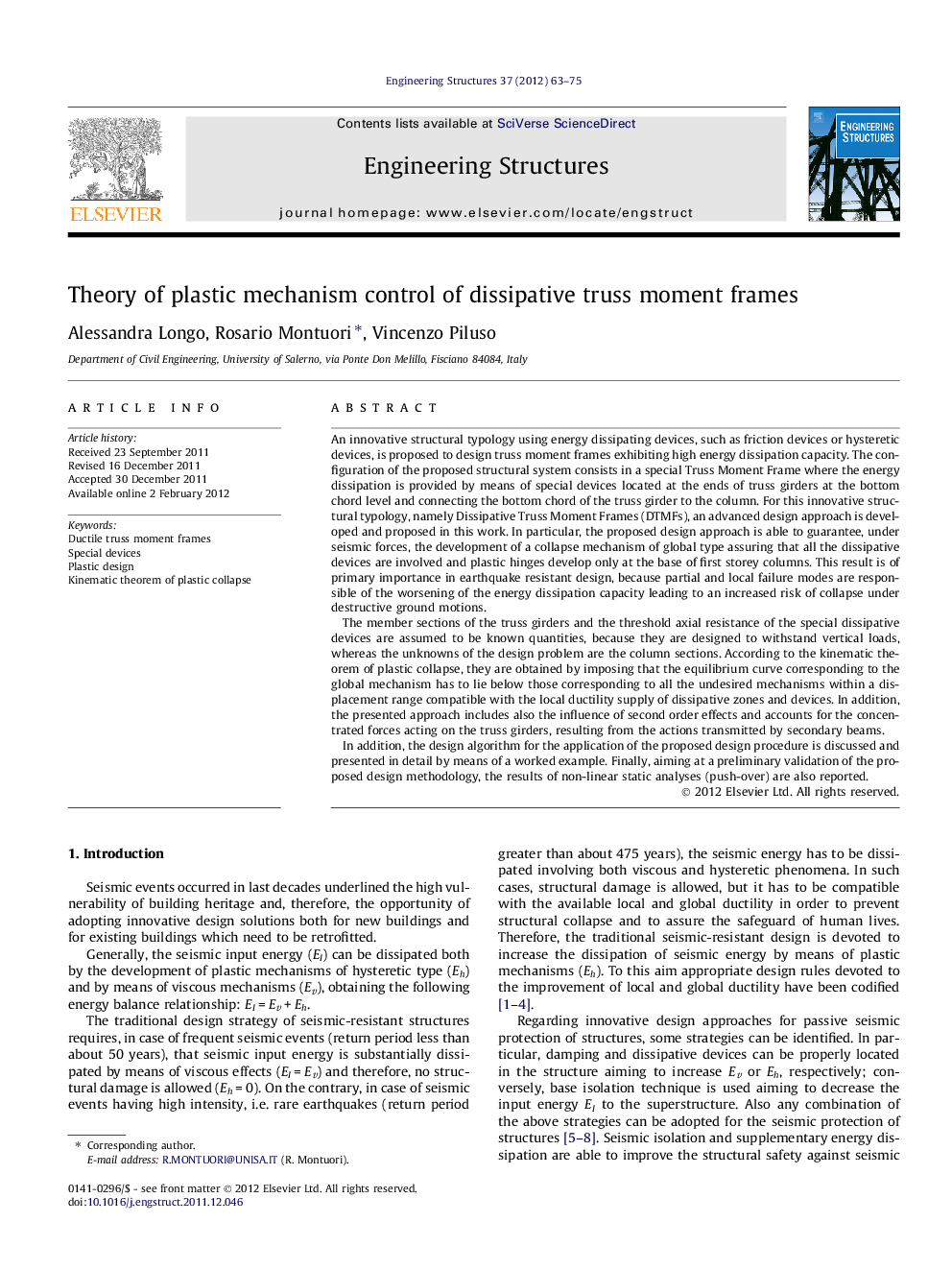| Article ID | Journal | Published Year | Pages | File Type |
|---|---|---|---|---|
| 267732 | Engineering Structures | 2012 | 13 Pages |
An innovative structural typology using energy dissipating devices, such as friction devices or hysteretic devices, is proposed to design truss moment frames exhibiting high energy dissipation capacity. The configuration of the proposed structural system consists in a special Truss Moment Frame where the energy dissipation is provided by means of special devices located at the ends of truss girders at the bottom chord level and connecting the bottom chord of the truss girder to the column. For this innovative structural typology, namely Dissipative Truss Moment Frames (DTMFs), an advanced design approach is developed and proposed in this work. In particular, the proposed design approach is able to guarantee, under seismic forces, the development of a collapse mechanism of global type assuring that all the dissipative devices are involved and plastic hinges develop only at the base of first storey columns. This result is of primary importance in earthquake resistant design, because partial and local failure modes are responsible of the worsening of the energy dissipation capacity leading to an increased risk of collapse under destructive ground motions.The member sections of the truss girders and the threshold axial resistance of the special dissipative devices are assumed to be known quantities, because they are designed to withstand vertical loads, whereas the unknowns of the design problem are the column sections. According to the kinematic theorem of plastic collapse, they are obtained by imposing that the equilibrium curve corresponding to the global mechanism has to lie below those corresponding to all the undesired mechanisms within a displacement range compatible with the local ductility supply of dissipative zones and devices. In addition, the presented approach includes also the influence of second order effects and accounts for the concentrated forces acting on the truss girders, resulting from the actions transmitted by secondary beams.In addition, the design algorithm for the application of the proposed design procedure is discussed and presented in detail by means of a worked example. Finally, aiming at a preliminary validation of the proposed design methodology, the results of non-linear static analyses (push-over) are also reported.
► An innovative structural typology using dissipative devices is proposed: DTMFs. ► DTMFs are truss MRFs with dampers located at truss girder bottom chord level. ► The proposed seismic design approach is able to assure a global collapse mechanism. ► The robustness of the proposal relies on the kinematic theorem of plastic collapse. ► Second order effects are also accounted for by means of mechanism equilibrium curves.
